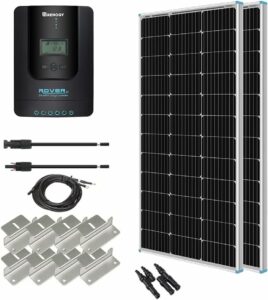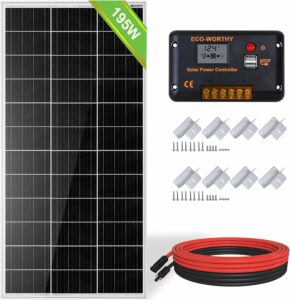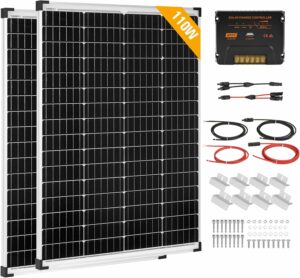How Many Solar Panels Are Required to Run an Air Conditioner?
Introduction to Solar Power and Air Conditioning
The global shift towards sustainable and eco-friendly energy sources has spotlighted solar power.
Solar energy, harnessed from the sun’s abundant rays, is pivotal in powering various aspects of our daily lives.
In this context, the intersection of solar power and air conditioning presents an intriguing and environmentally conscious solution.
Understanding Solar Energy:
Solar power involves capturing sunlight and converting it into electricity through photovoltaic cells. Solar energy’s clean and renewable nature makes it an attractive option for reducing our dependence on non-renewable resources.
As concerns about climate change and carbon emissions grow, integrating solar power into everyday appliances becomes crucial.
The Challenge of Air Conditioning:
Air conditioning is a staple in modern living, providing comfort in residential and commercial spaces.
However, traditional air conditioning systems often rely on electricity generated from fossil fuels, contributing to greenhouse gas emissions.
As the demand for cooling solutions rises with increasing global temperatures, finding sustainable ways to power air conditioners is paramount.
The Nexus of Solar Power and Air Conditioning:
The quest for eco-friendly alternatives has led to the exploration of solar power as a viable energy source for air conditioning.
We can mitigate the environmental impact of conventional power sources by harnessing the sun’s energy to run air conditioning units.
This aligns with the broader goal of reducing carbon footprints and offers the prospect of energy independence for individuals and businesses.
In the upcoming sections, we will investigate how many solar panels are needed to power an air conditioner effectively.
Factors such as the size of the air conditioner, local climate conditions, and the efficiency of the solar panels will be explored to provide a comprehensive guide for those considering a sustainable approach to cooling their living or working spaces.
Provo Green Products embodies a beacon of trust in sustainable discoveries, offering choices that enhance your life and leave a positive mark on our planet.
Leveraging extensive expertise in manufacturing, construction, and various trades, we provide a solid foundation for sustainable living.
Our meticulous research process guarantees that our information about each product is precise and current, allowing you to make informed decisions.
Whether your interest lies in solar products, electric bikes, or other eco-friendly alternatives, our commitment to credibility ensures you have access to dependable insights, guiding your journey toward a more sustainable lifestyle.
Provo Green Products is your go-to destination for finding the right green products for your lifestyle.
Disclosure: As an Amazon Associate, we may earn from qualifying purchases. This does not affect the product pricing whatsoever.
Factors Affecting Solar Panel Requirements
Several crucial factors come into play when determining the number of solar panels required to power an air conditioner effectively.
Understanding these variables is essential for designing a solar power system that meets the specific energy needs of the air conditioning unit while maximizing efficiency.
Size and Efficiency of the Air Conditioner:
- The power consumption of an air conditioner is directly influenced by its size and efficiency. Larger air conditioning units generally require more energy, impacting the number of solar panels needed. Additionally, newer, more energy-efficient models may demand fewer solar panels to achieve the same cooling output.
Local Climate Conditions and Sunlight Availability:
- Solar panel performance is heavily dependent on sunlight exposure. Regions with ample sunlight will naturally generate more solar power. Understanding the local climate conditions, including average sunlight hours and seasonal variations, is crucial for accurately estimating the solar panel requirements. Cloudy or rainy climates may necessitate larger solar arrays to compensate for reduced sunlight.
Energy Consumption Patterns and Peak Usage Times:
- Analyzing the energy consumption patterns of the air conditioner and identifying peak usage times is essential. Solar panels generate varying amounts of power throughout the day, reaching peak production during sunlight hours. Aligning the solar panel system’s capacity with the air conditioner’s peak demand ensures a reliable and consistent power supply.
Orientation and Tilt of Solar Panels:
- The orientation and tilt of solar panels significantly impact their energy capture efficiency. Properly aligning the panels to face the sun and adjusting their tilt according to the local latitude enhances overall performance. Optimizing these parameters ensures solar panels receive maximum sunlight exposure, increasing the system’s overall efficiency.
Battery Storage Capacity:
- Integrating battery storage into the solar power system provides a means of storing excess energy generated during peak sunlight hours. This stored energy can then be utilized during periods of low sunlight or increased air conditioner demand. The capacity of the battery storage system influences the overall resilience and reliability of the solar-powered air conditioning setup.
As we delve deeper into the intricacies of calculating energy needs and optimizing solar panel capacity, these factors will play a crucial role in tailoring a solar power solution that is both efficient and sustainable.
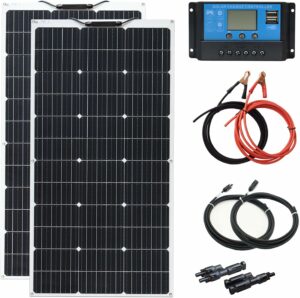
Calculating Energy Needs for Air Conditioning
To determine the number of solar panels required to run an air conditioner, it’s essential to have a precise understanding of its energy consumption.
This involves converting the unit’s power requirements into a format compatible with solar panel capacity.
- Understanding Air Conditioner Energy Consumption:
- Start by identifying the power consumption of the air conditioner, typically measured in watts (W) or kilowatts (kW). This information is usually available in the appliance’s specifications or user manual. It represents the rate at which the air conditioner consumes electricity.
- Conversion to Kilowatt-Hours (kWh):
- Convert the power consumption from watts to kilowatts by dividing the wattage by 1000. This conversion is crucial for aligning the unit’s energy usage with the standard electricity consumption measurement, kilowatt-hours (kWh).
- Estimating Daily and Monthly Energy Requirements:
- Once the energy consumption is in kilowatt-hours, calculate the air conditioner’s daily and monthly energy needs. Multiply the unit’s energy consumption in kilowatt-hours by the number of hours it operates daily to obtain the daily requirement. For the monthly estimate, multiply the daily requirement by the number of days in a month.
- Accounting for Seasonal Variations and Peak Usage:
- Consider seasonal variations in air conditioning usage and identify peak usage times. This information is crucial for sizing the solar panel system to meet the increased demand during hotter months or specific times of the day. It ensures that the solar panels generate enough energy to cover the maximum requirements of the air conditioner.
- Factoring in Efficiency Losses:
- Recognize that only some energy solar panels generate is effectively utilized. Efficiency losses can occur due to shading, dust, or suboptimal panel orientation. Factor in these losses to ensure the solar panel system compensates for potential inefficiencies and delivers the required energy reliably.
By systematically calculating the energy needs of the air conditioner, you lay the groundwork for determining the appropriate size and capacity of the solar panel system.
In the subsequent sections, we will explore the types of solar panels available, their efficiency ratings, and how to effectively size the system to meet the calculated energy requirements.
Solar Panel Capacity and Efficiency
Selecting the suitable solar panel capacity and ensuring optimal efficiency are critical steps in designing a solar power system capable of reliably running an air conditioner.
Understanding the types of solar panels available, their efficiency ratings, and how to size the system based on calculated energy needs is fundamental to the success of the overall setup.
Types of Solar Panels:
- Solar panels come in various types, each with its unique characteristics. The two most common types are monocrystalline and polycrystalline panels. Monocrystalline panels are known for higher efficiency and a sleeker appearance, while polycrystalline panels are generally more affordable. Assessing the specific needs, preferences, and budget considerations helps choose the most suitable type for the solar power system.
Efficiency Ratings:
- Solar panel efficiency determines how much sunlight can be converted into electricity. Efficiency is expressed as a percentage, representing the proportion of sunlight the panel can convert into usable power. Higher-efficiency panels typically require less space and can generate more electricity under the same sunlight conditions.
Sizing the Solar Panel System:
- The size of the solar panel system is directly related to the energy needs of the air conditioner. To determine the system size, divide the monthly energy requirement (kilowatt-hours) by the average daily sunlight hours. This calculation estimates the daily energy generation needed to power the air conditioner.
Consideration of Peak Sunlight Hours:
- Understand the concept of peak sunlight hours, which refers to the period when the sunlight intensity is sufficient for optimal solar panel performance. Factoring in peak sunlight hours ensures that the solar panel system is designed to generate enough energy during the most favorable conditions, effectively meeting the air conditioner’s demands.
Potential for Expansion:
- Anticipate future energy needs and consider the potential for expanding the solar panel system. This could involve adding more panels or upgrading to higher-efficiency models. A flexible design allows for scalability, accommodating changes in energy consumption or adding new appliances to the solar-powered system.
As we navigate the intricacies of solar power and air conditioning integration, understanding the nuances of solar panel capacity and efficiency will empower individuals and businesses to make informed decisions.
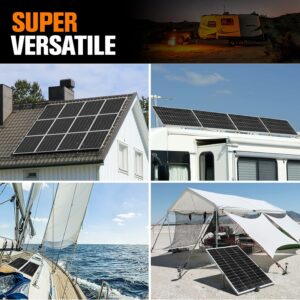
Considerations for Practical Implementation
Several practical considerations come into play in implementing solar power to run air conditioners.
From budget constraints to space requirements and ongoing maintenance, addressing these factors is crucial for a solar-powered air conditioning system’s successful deployment and long-term sustainability.
Budget Considerations:
- Assessing the budget for the solar power system is a foundational step. Consider the cost of purchasing and installing solar panels and any additional components, such as inverters and batteries. Balancing upfront costs with long-term energy savings is essential to ensure the feasibility of the solar-powered solution.
Space Requirements:
- Solar panels require sufficient space for optimal performance. Evaluate the available roof space or ground area to determine the feasibility of the required panels. Considerations should also extend to potential shading from nearby structures or trees, as shading can significantly impact energy generation.
Local Regulations and Incentives:
- Research local regulations and incentives related to solar power installations. Understanding permit requirements, zoning restrictions, and available incentives or rebates can streamline the installation process and provide potential cost savings. Compliance with local regulations is essential for a smooth and legally sound implementation.
Maintenance and Monitoring:
- Like any technology, solar panels require regular maintenance to ensure optimal performance. Establish a plan for routine inspections, cleaning, and addressing any issues. Additionally, integrating a monitoring system allows for real-time tracking of energy production, enabling timely detection of any deviations from expected performance.
Integration with the Electrical System:
- Ensure seamless solar power system integration with the existing electrical infrastructure. This includes connecting solar panels to inverters, which convert the generated DC electricity into AC electricity compatible with the air conditioner and the broader electrical grid. A well-designed integration minimizes energy losses and maximizes the entire system’s efficiency.
Environmental Impact:
- Consider the broader environmental impact of the solar power system. While solar energy is a clean and renewable resource, producing and disposing of solar panels have environmental implications. Exploring options for recycling or responsibly disposing of panels at the end of their lifecycle contributes to a more sustainable approach.
Addressing these practical considerations ensures that the transition to solar-powered air conditioning is environmentally friendly, economically viable, and operationally efficient.
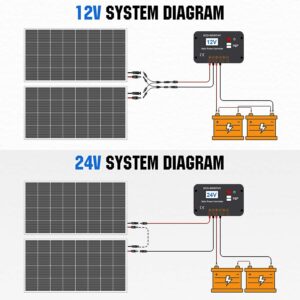
Conclusion
Integrating solar power with air conditioning reveals a nuanced interplay of factors, from understanding energy needs and selecting the suitable solar panel capacity to practical considerations in implementation.
Pursuing sustainable and eco-friendly alternatives aligns with the global commitment to reducing our carbon footprint.
By navigating through the intricacies of solar panel technology, efficiency ratings, and system sizing, individuals and businesses can harness the power of the sun to cool their spaces while contributing to a cleaner, greener future.
Stay in Touch!
I’am a dedicated entrepreneur with many years of experience and an integrity-driven individual who is highly motivated to succeed. Leveraging extensive expertise in manufacturing, construction, and various trades, we can provide a solid foundation for sustainable living. Our meticulous research process guarantees that our information about each product is precise and current, allowing you to make informed decisions. A deep understanding of business operations empowers me to consistently implement improvements that result in ongoing success. Visit site.

